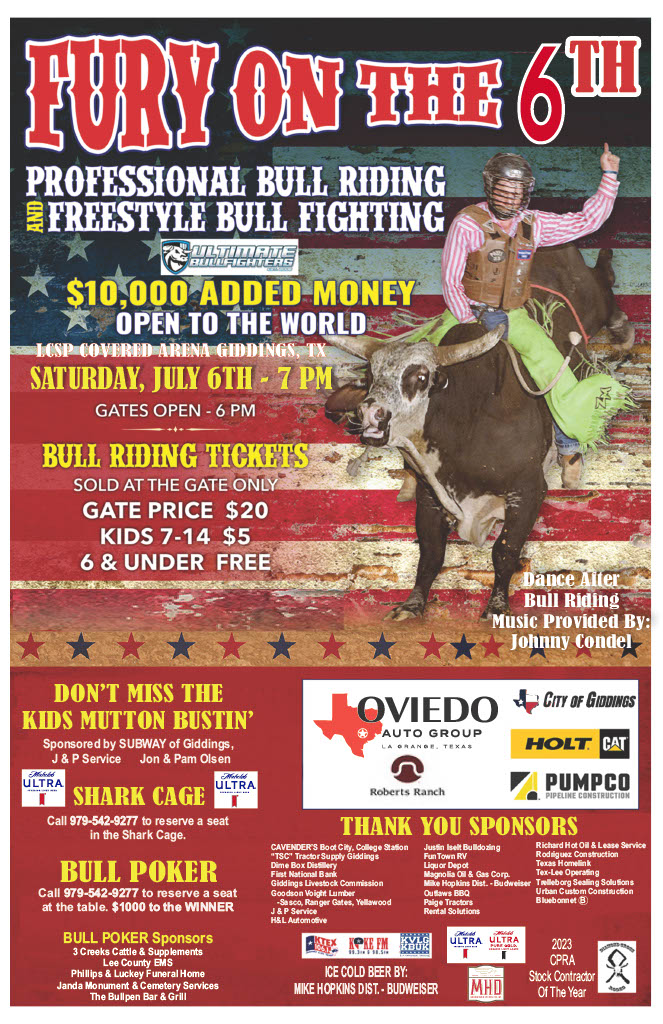It’s football season in Texas, which reminds me of a burr in my saddle.
Many longtime readers of this column know that I’m no fan of grass. I consider it more of a weed around my yard and gardens. But it is great for two things: grazing livestock and playing sports.
Who doesn’t love that smell of fresh cut grass when they walk onto a football field?
Artificial turf salesmen, that’s who.
The stuff costs a lot of money. La Grange ISD spent about $3 million to install a new track and turf field at Leopard Stadium. (Remember LGISD voters, the school had that money in the bank and used it for the stadium project after all of us approved a $38 million bond for upgrades on the elementary campus. Is it wise to borrow money for things you need and spend money you have on the things you want? But I digress.)
Flatonia ISD installed a turf field last year at an estimated cost between $750,000 and $850,000.
The Fayetteville Alumni Association took out a $215,000 loan to install a turf infield at the baseball field in Fayetteville.
Thankfully in my hometown, Schulenburg, level heads have prevailed. There doesn’t seem to be much interest in synthetic turf at David Hussman Memorial Stadium. I hope it stays that way.
Artificial turf salesmen have convinced many school administrators that their fields cost less in the long run. They do have to be replaced from time to time. And they come with periodic maintenance. Maybe it’s cheaper, but I doubt it.
Sure, you can play in the rain without tearing up the field. But the most epic football games I ever played were on a muddy field.
Some of today’s high school athletes like turf because they run faster on it. Is that a good thing, though? More and more people are keeping their kids out of football because of head injuries. Head injuries in football are tied to speed.
A 2018 study compared injuries in American Football to injuries in rugby. The study found that rugby players sustained more injuries do to their lack of pads. American Football players sustained fewer injuries but the injuries they suffered were more severe. The researchers attributed that to greater speed in American Football.
Most artificial fields use some kind of “infill” to soften the surface during impacts. Older designs use rubber material made from recycled car tires. My sons hated playing on these fields. They said the tiny particles of rubber would get into their ears, mouth, nose and every other crevice on their bodies. Who knows how healthy that stuff is?
Newer designs, like the one in La Grange, use plantor wood-based infill material. That’s better than rubber, I suppose. But I wonder what happens when the organic material starts to decompose. I’ve attempted to research this topic but there doesn’t seem to be much information available, possibly because these products are still quite new.
Professional baseball and football franchises in America have been moving away from artificial turf. A little under half of all NFL teams play on artificial turf, but the vast majority of NFL players prefer playing natural grass. The NFL Player’s Association has been asking team owners to replace artificial practice fields with natural grass.
In 1992, half of the teams in the MLB National League played on artificial turf. By 2008, all NL teams played on natural grass.
I wish our local school administrators would follow that trend.
Better yet, public schools should get out of organized sports all together. I don’t often look to Europe for social policy solutions, but they handle youth sports much better than we do in America. Youth sports are primarily private clubs, often supported by professional teams. This is Texas. It’s not like high school football would suddenly stop. It just wouldn’t be tied to high school.
But I bet the artificial turf salesmen would have a tougher time selling their product to a non-profit sports club than a government entity that collects taxes.




